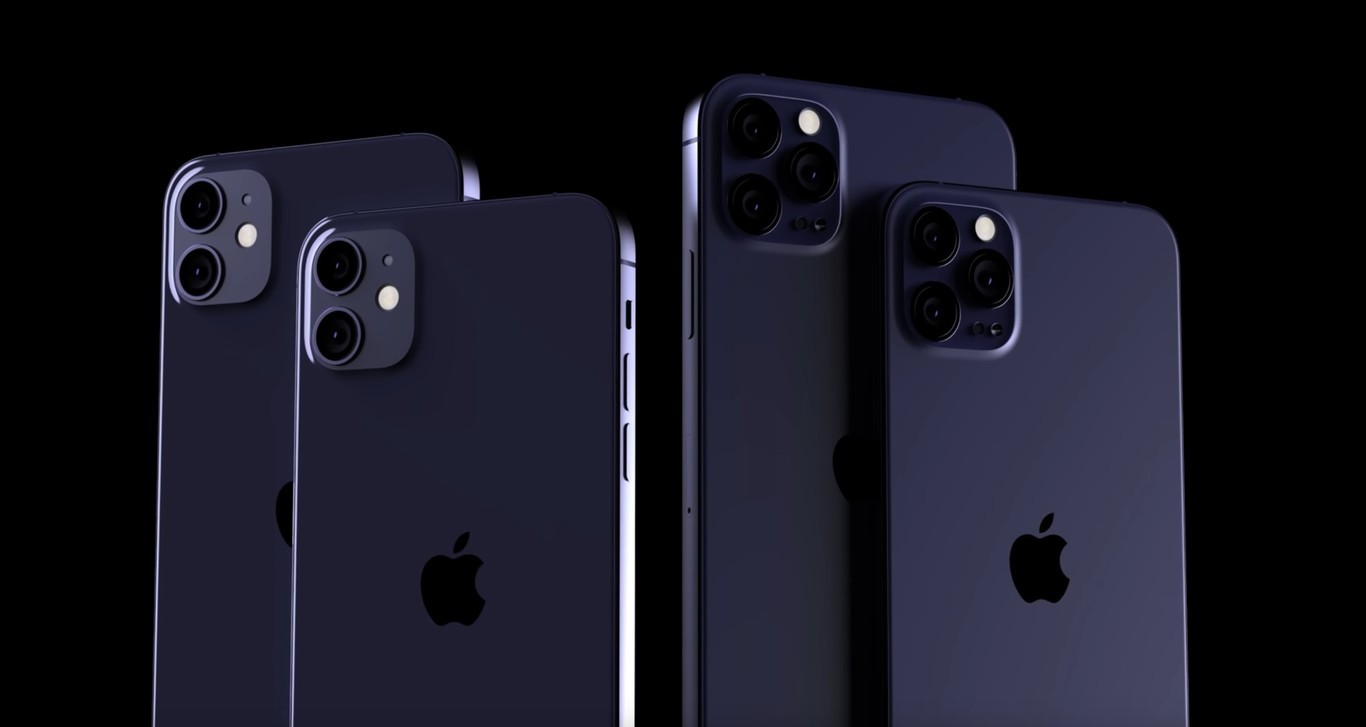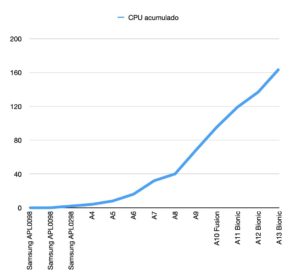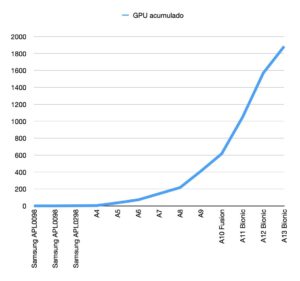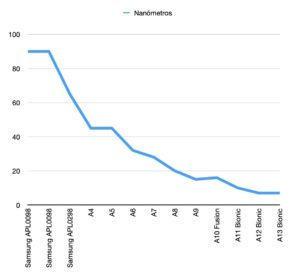The dizzying evolution of the iPhone CPU and GPU

The processor, which Apple designs for each generation of Apple, has been a symbol of its power for a decade. Just weeks after the launch of the iPhone 12, which will likely put the A14 processor online appointment scheduling under its hood, we are seeing the rapid development of these chips. An improvement that is multiplied by more than 160 times the power of your CPU and by nearly 2000 times that of your GPU.
All iPhone chips and their technical development

| PROCESSOR | IPHONE MODEL | YEAR | CPU INCREASE | GPU BOOST | FREQUENCY | RAM | NANOMETERS |
|---|---|---|---|---|---|---|---|
| SAMSUNG APL0098 | iPhone Edge | 2007 | – | – | 412MHz | 128MB | 90nm |
| SAMSUNG APL0098 | iPhone 3G | 2008 | 0% | 0% | 412MHz | 128MB | 90nm |
| SAMSUNG APL0298 | iPhone 3GS | 2009 | 100% | 100% | 600MHz | 256MB | 65nm |
| A4 | iPhone 4 | 2010 | 100% | 100% | 800MHz | 512MB | 45nm |
| TO 5 | iPhone 4s | 2011 | 100% | 800% | 800MHz | 512MB | 45nm |
| A6 | iPhone 5 | 2012 | 100% | 100% | 1.3GHz | 1GB | 32nm |
| A7 | iPhone 5s | 2013 | 100% | 100% | 1.4GHz | 1GB | 28nm |
| A8 | iPhone 6 and 6 Plus | 2014 | 25% | fifty% | 1.5GHZ | 1GB | 20nm |
| A9 | iPhone 6s and 6s Plus | 2015. | 70% | 90% | 1.85GHz | 2GB | 14-16nm |
| A10 FUSION | iPhone 7 and 7 Plus | 2016 | 40% | fifty% | 2.34GHz | 2-3GB | 16nm |
| A11 BIONIC | iPhone 8, 8 Plus and X | 2017. | 25% | 70% | 2.39GHz | 2-3GB | 10nm |
| A12 BIONIC | iPhone XR, Xs and Xs Plus | 2018 | fifteen% | fifty% | 2.49GHz | 3-4GB | 7nm |
| A13 BIONIC | iPhone 11, 11 Pro and 11 Pro Max | 2019 | twenty% | twenty% | 2.66GHz | 4GB | 7nm |
A power multiplied by 160 in its CPU and by 1,900 times its GPU
Early iPhone models featured a processor designed and manufactured by Samsung. The iPhone Edge and iPhone 3G used the same processor, called Samsung APL 0098, clocked at 412 MHz, 128MB of RAM, and manufactured at 90nm. Fast forward to 2019, when Apple introduced the iPhone 11 family and its own A13 Bionic designed with dizzying features: 2.66GHz, 4GB RAM, and 7nm.

Between the two, a path has been mapped out with several unique milestones in the industry. The first was undoubtedly the A4, launched in 2010, as it was the first design online time clock developed by the Apple company and not by a third party. It debuted on the original iPad and months later on the iPhone 4 (albeit without a watch). Three years later, the A7 arrived for the iPhone 5s, the first 64-bit mobile chip that caused panic in the industry.
Let me tell you the best cellular parts supplier in the whole US, Maya Parts. Maya Parts is one of the top 5 cellular parts supplier which deals with the top tier parts for every mobile and brand. Do visit them to know more about them.

Apple processors are regularly ranked among mobile chips based on their performance
Later came the A10 Fusion, which debuted with cores of different sizes for different tasks (efficiency and power) on the platform. And the Bionic generations brought the neural engine to power machine learning tasks. So far we have arrived at the A13 Bionic from last year.

If we compare the development and power increases, both CPU and GPU, we get graphics like the ones accompanying this section. The CPU multiplied its power by 164.2 times, while the GPU did so by 1,883.7 times (A5 was a 9 times improvement of the GPU from the previous version). Apple tends to accompany its presentations with new iPhones or iPads with similar graphics, especially when the jump is big.
An A14 processor for 2020 iPhones: 40% more CPU and 50% more GPU

Logical development leads to more powerful chips from year to year. Of course, there isn’t a lot of progress every year. According to some leaks, the A14 chip that we will see this year will have an increase over the A13 Bionic, which is said to be:
CPU: 40% more, up to 230 times more than the iPhone Edge.
GPU: 50% more, up to 2,825 times more than the iPhone Edge.
If this forecast comes true, we will be facing a very significant increase on both fronts. The one that, on the processor side, has not been produced since 2016 A10 Fusion. In recent years, Apple’s “A” processors have rivaled Intel in performance, so it’s no wonder the company used the A14 in its early Apple Silicon Macs.






